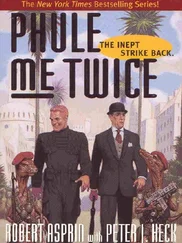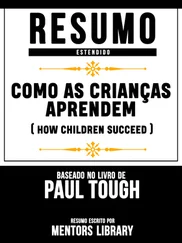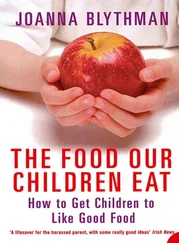Bruce McEwen, a neuroendocrinologist: My knowledge of Bruce McEwen’s work comes from conversations with him as well as from Bruce S. McEwen, “Protection and Damage from Acute and Chronic Stress,” Annals of the New York Academy of Sciences 1032 (2004); Sapolsky, Zebras Don’t Get Ulcers; and Teresa Seeman et al., “Modeling Multisystem Biological Risk in Young Adults: The Coronary Artery Risk Development in Young Adults Study,” American Journal of Human Biology 22 (2010).
researchers, led by Teresa Seeman: Seeman et al., “Modeling Multisystem Biological Risk”; and Teresa Seeman et al., “Socio-Economic Differentials in Peripheral Biology: Cumulative Allostatic Load,” Annals of the New York Academy of Sciences 1186 (2010).
Among her patients with an ACE score of 0: Nadine J. Burke, Julia L. Hellman, Brandon G. Scott, Carl F. Weems, and Victor G. Carrion, “The Impact of Adverse Childhood Experiences on an Urban Pediatric Population,” Child Abuse and Neglect 35, no. 6 (June 2011).
46 percent of kindergarten teachers: Sara E. Rimm-Kaufman, Robert C. Pianta, and Martha J. Cox, “Teachers’ Judgments of Problems in the Transition to Kindergarten,” Early Childhood Research Quarterly 15, no. 2 (2000).
Head Start teachers reported: Janis B. Kupersmidt, Donna Bryant, and Michael T. Willoughby, “Prevalence of Aggressive Behaviors Among Preschoolers in Head Start and Community Child Care Programs,” Behavioral Disorders 26, no. 1 (November 2000).
compared them to a team of air traffic controllers: Center on the Developing Child at Harvard University, “Building the Brain’s ‘Air Traffic Control’ System: How Early Experiences Shape the Development of Executive Function,” working paper 11 (Cambridge, MA: Center on the Developing Child, February 2011).
two researchers at Cornell University: Gary W. Evans and Michelle A. Schamberg, “Childhood Poverty, Chronic Stress, and Adult Working Memory,” Proceedings of the National Academy of Sciences 106, no. 16 (2009).
something uniquely out of balance about the adolescent brain: Laurence Steinberg, “A Behavioral Scientist Looks at the Science of Adolescent Brain Development,” Brain and Cognition 72 (2010).
two separate neurological systems: Laurence Steinberg, “A Social Neuroscience Perspective on Adolescent Risk-Taking,” Developmental Review 28, no. 1 (March 2008); Laurence Steinberg, “A Dual Systems Model of Adolescent Risk-Taking,” Developmental Psychobiology 52, no. 3 (April 2010).
Researchers from Northwestern University: Karen M. Abram et al., “Posttraumatic Stress Disorder and Trauma in Youth in Juvenile Detention,” Archives of General Psychiatry 61 (April 2004).
Academically, they were severely behind the curve: Roseanna Ander, Philip J. Cook, Jens Ludwig, and Harold Pollack, Gun Violence Among School-Age Youth in Chicago (Chicago: University of Chicago Crime Lab, 2009).
researchers in Meaney’s lab noticed a curious thing: Dong Liu et al., “Maternal Care, Hippocampal Glucocorticoid Receptors, and Hypothalamic-Pituitary-Adrenal Responses to Stress,” Science 277, no. 5332 (September 12, 1997).
Researchers counted every instance of maternal licking and grooming: Christian Caldji et al., “Maternal Care During Infancy Regulates the Development of Neural Systems Mediating the Expression of Fearfulness in the Rat,” Proceedings of the National Academy of Sciences 95, no. 9 (April 28, 1998).
a number of cross-fostering experiments: Christian Caldji, Josie Diorio, and Michael J. Meaney, “Variations in Maternal Care in Infancy Regulate the Development of Stress Reactivity,” Biological Psychiatry 48, no. 12 (December 15, 2000).
It goes much deeper than that: Ian C. G. Weaver et al., “Epigenetic Programming by Maternal Behavior,” Nature Neuroscience 7, no. 8 (August 2004); Robert M. Sapolsky, “Mothering Style and Methylation,” Nature Neuroscience 7, no. 8 (August 2004).
using the brain tissue of human suicides: Patrick O. McGowan et al., “Epigenetic Regulation of the Glucocorticoid Receptor in Human Brain Associates with Child Abuse,” Nature Neuroscience 12, no. 3 (March 2009); Steven E. Hyman, “How Adversity Gets Under the Skin,” Nature Neuroscience 12, no. 3 (March 2009); Hanna Hoag, “The Painted Brain: How Our Lives Colour Our Minds,” Montreal Gazette, January 18, 2011.
Clancy Blair, a researcher in psychology at NYU: Clancy Blair et al., “Salivary Cortisol Mediates Effects of Poverty and Parenting on Executive Functions in Early Childhood,” Child Development 82, no. 6 (November/December 2011).
When mothers scored high on measures of responsiveness: Clancy Blair et al., “Maternal and Child Contributions to Cortisol Response to Emotional Arousal in Young Children from Low-Income, Rural Communities,” Developmental Psychology 44, no. 4 (2008). See also Clancy Blair, “Stress and the Development of Self-Regulation in Context,” Child Development Perspectives 4, no. 3 (December 2010).
Gary Evans, the Cornell scientist: Gary W. Evans et al., “Cumulative Risk, Maternal Responsiveness, and Allostatic Load Among Young Adolescents,” Developmental Psychology 43, no. 2 (2007).
Attachment theory was developed in the 1950s and 1960s: Robert Karen, Becoming Attached: First Relationships and How They Shape Our Capacity to Love (New York: Oxford University Press, 1998).
Egeland and Sroufe began tracking this group: My knowledge of the Minnesota study comes mostly from conversations with Byron Egeland, Alan Sroufe, Andrew Collins, and other researchers; from L. Alan Sroufe, Byron Egeland, Elizabeth A. Carlson, and W. Andrew Collins, The Development of the Person: The Minnesota Study of Risk and Adaptation from Birth to Adulthood (New York: Guilford Press, 2005); from Alan Sroufe and Daniel Siegel, “The Verdict Is In: The Case for Attachment Theory,” Psychotherapy Networker (March/April 2011); and from Karen, Becoming Attached.
two-thirds of children in the Minnesota study: Sroufe et al., Development of the Person, 132.
When teachers ranked students on indicators of dependency: Ibid., 133.
When teachers and other children were surveyed: Ibid., 139–41.
more self-confident, more curious: L. Alan Sroufe, “Attachment and Development: A Prospective, Longitudinal Study from Birth to Adulthood,” Attachment and Human Development 7, no. 4 (December 2005): 357.
early parental care predicted which students would graduate: Sroufe et al., Development of the Person, 211, 228; Shane Jimerson, Byron Egeland, L. Alan Sroufe, and Betty Carlson, “A Prospective Longitudinal Study of High School Dropouts Examining Multiple Predictors Across Development,” Journal of School Psychology 38, no. 6 (2000).
could have predicted with 77 percent accuracy: Sroufe et al., Development of the Person, 210; Jimerson et al., “A Prospective Longitudinal Study.”
In one study, Dante Cicchetti: Dante Cicchetti, Fred A. Rogosch, and Sheree L. Toth, “Fostering Secure Attachment in Infants in Maltreating Families Through Preventive Interventions,” Development and Psychopathology 18, no. 3 (2006).
An intervention called Multidimensional: Megan R. Gunnar, Philip A. Fisher, and the Early Experience, Stress, and Prevention Network, “Bringing Basic Research on Early Experience and Stress Neurobiology to Bear on Preventive Interventions for Neglected and Maltreated Children,” Development and Psychopathology 18, no. 3 (2006).
Читать дальше



![Коринн МакКей - How to Succeed as a Freelance Translator [calibre 3.46.0]](/books/402693/korinn-makkej-how-to-succeed-as-a-freelance-transl-thumb.webp)








